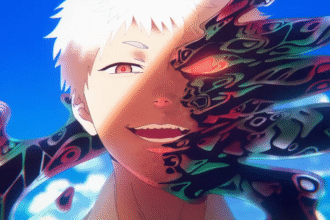Kazuhiko Torishima, the former editor for the iconic Dragon Ball manga, stated that the Japanese manga industry has lost its unique artistic identity, leading to a “bleak” future for the medium.
Speaking at a press conference at Japan Expo on July 4, 2025, Torishima argued that one of the reasons for this loss of identity is the industry’s move to digital platforms.
He noted that these platforms rely on algorithms to suggest similar manga to readers, and this reliance on algorithms has led to a point where all manga look the same.
“With digital manga, algorithms feed readers only the same kind of content. We’ve reached a point where all manga look the same, taste the same—like Starbucks manga or McDonald’s manga,” he said. “Japanese manga has lost its sense of unique artistic identity.“
Torishima felt that if editors at Shueisha continued to ignore this data and went against the vision of people like him, then it would be in “real danger.”
He then went on to point out another part of the problem affecting manga industry, which stemmed from the hiring practices within publishing houses, According to Torishima, hiring people who’ve only read manga, as opposed to ones who have a broader taste in general, was severely stagnating the creativity of the medium.
“Publishers hire people who’ve only ever read manga,” he explained. “If you don’t hire people with broader tastes—cinema, literature—the creative world keeps shrinking.”
He drew a comparison to legendary mangaka Osamu Tezuka, noting that he was an avid cinema enthusiast who incorporated diverse camera angles, like overhead shots, into his work. He believed that the current manga artists were less skilled that Tezuka.

Torishima himself was someone who never read any manga before joining Shueisha, being asked to read a bunch of older Jump issues as part of his job as editor.
On top of these issues, the former editor explained that the digital shift has also caused manga to move away from its traditional young readership. He stated that children often cannot access digital manga because they do not have smartphones or credit cards.
He also laid blame on current editors, suggesting their paneling skills are not as adept as those of their predecessors, making manga more difficult for children to read.
There has also been a significant demographic change in Japan, with boys aged 5-15, the core shonen demographic, having shrunk from 8.22% of Japan’s population in 1984 to 4.2% in 2024.
Torishima’s career at Shueisha began in 1976. As an editor for Weekly Shonen Jump, he was instrumental in discovering Akira Toriyama and shaping both Dr. Slump and the first half of the monumental series Dragon Ball.
He later served as the editor-in-chief of Weekly Shonen Jump from 1996 to 2001, a period that saw the continued success of major titles like One Piece and the launch of Naruto. He is currently an advisor to Hakusensha, Inc.
Source: DB-Z







